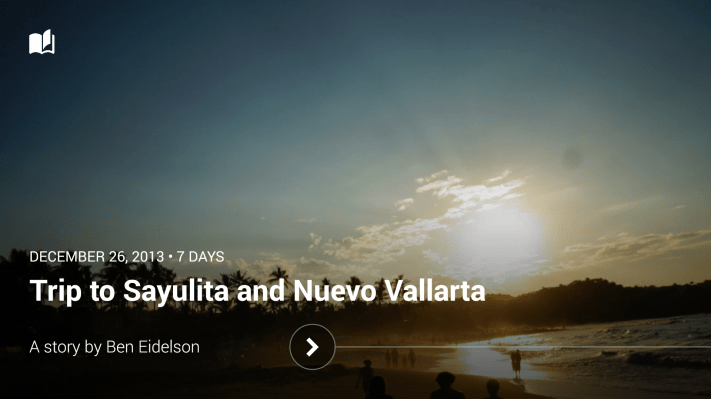Google has been doing some impressive things with its users’ personal media – it introduced its Auto Awesome features last year at Google I/O to bring some instant editing magic to user photo collections, for instance. Auto Awesome could tweak stuff like contrast and color on images to make pictures pop in a way similar to what pros might do when making light edits in programs like Adobe Lightroom or Apple Aperture, but without any intervention required so anyone could use it. Today, it continues that trend with Stories.
The new Stories feature builds on that progress, adding a way to cohesively build a narrative out of your images, which otherwise can appear just sort of hastily thrown together or dumped off of a storage card. Google will automatically find your best shots, factor in location data and stitch them together into travelogue collections. It’s already available on Android and the web starting this week, and will come to iOS later on.
[gallery ids="1004751,1004752,1004753,1004754,1004755,1004756,1004757,1004758,1004759"]
Stories are full-featured multimedia experiences that actually take over your browser, and can be viewed fullscreen for an even more immersive effect. This is no mere slideshow; there are transitions and animations as well as captions and interstitials, with a page-through navigation mechanism that, again, requires no input from a user themselves. It automatically weeds out duplicates, out-of-focus images and more, and also uses geo-tags and landmark detection to figure out where you are. It can pull in place and city names, build travel maps and more, too.
The video feature called Movies, which previously was exclusive to certain Android devices, also now makes its way out to all iOS, Android and web devices. This incorporates your movies and video into a YouTube video that’s ready to share.
Stories are automatically generated when you use the auto upload and backup feature with your Google+ app, and you’ll receive a notification when a Story is ready for viewing and sharing. They’ll be private by default, and before you make them public or share them via private link, you’ll have the chance to make manual edits, add new photos and make and alter captions.
Backing up photos to the cloud is now table stakes, and Google realizes that the next important stage in media management will be taking any thought and work out of organizing collections for playback and sharing. This is the same thing that others, including startup Shoebox, and Dropbox with Carousel, are also clueing in on, but Google has an immense wealth of data to draw from to turn the aimless shotgun fire of user vacation photos into a focused emotional asset that they might actually look at again, instead of consigning to oblivion.
